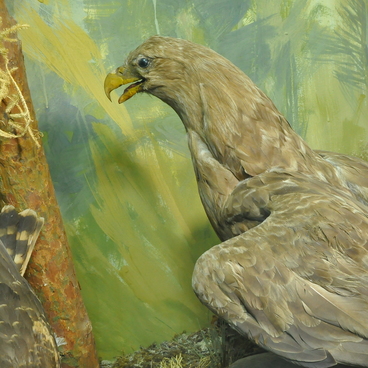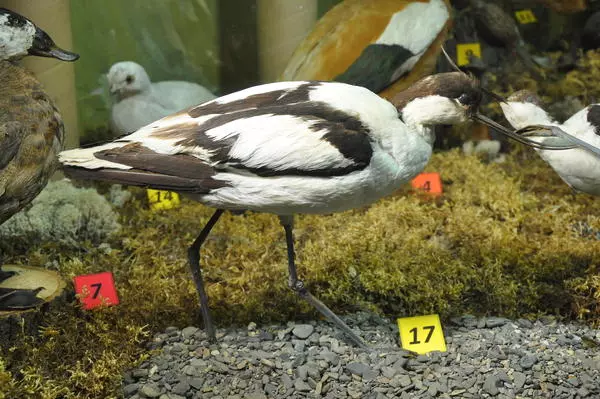The sociable lapwing, otherwise black-sided lapwing or sociable plover (Vanellus gregarius) belongs to the order Charadriiformes. It is an endemic wader, close to the broadly known and widespread common northern lapwing. The Russian name of the bird, krechetka, reminds of its harsh call, kereck-kereck-kereck.
The sociable lapwing is agile, vociferous, and doesn’t sit tight. Owing to intensive fallowing of the virgin steppes, it has lost its original areas of habitat and sometimes has to nest on ploughed fields. In grassland, the bird suffers greatly from cattle, which tramples down its nests.
Sociable lapwings nest in groups, often with other lapwing and plover species. Their homes are arranged on the ground, usually no less than 20—30 metres from one another. A clutch will normally include 3—5 eggs. Sociable lapwings are really brave in defending their eggs or nestlings from enemies. Records mention lapwings from various different families jointly repelling a wolf, black kite or duck hawk from their nests.
The sociable lapwing colouring is typical of steppe landscapes: the plumage is multicoloured, with brown, sandy, grey, tawny, and muddy shades. The head and breast rear are black, the rest of the breast and belly is orange. Depending on the season and age, the bird can change its attire. A young lapwing can be recognized by the typical mottles all over the plumage.
A female can be distinguished from a male by its size and colour density. The female’s breast is chestnut-coloured, not ginger red, the black spots are smoke grey rather than bright black, while the male can be identified due to its contrasted and bright colours, especially during the mating period.
In a natural environment, lapwings live about 3-4 years, the maximum recorded age in captivity is 12 years. Sociable lapwings reach puberty and make couples by their second year. The theory is that couples are formed during migration, and the birds allegedly arrive at their nesting ground in ‘families’. They reach the breeding place in the first half of April, in colder regions closer to early May.
The sociable lapwing is agile, vociferous, and doesn’t sit tight. Owing to intensive fallowing of the virgin steppes, it has lost its original areas of habitat and sometimes has to nest on ploughed fields. In grassland, the bird suffers greatly from cattle, which tramples down its nests.
Sociable lapwings nest in groups, often with other lapwing and plover species. Their homes are arranged on the ground, usually no less than 20—30 metres from one another. A clutch will normally include 3—5 eggs. Sociable lapwings are really brave in defending their eggs or nestlings from enemies. Records mention lapwings from various different families jointly repelling a wolf, black kite or duck hawk from their nests.
The sociable lapwing colouring is typical of steppe landscapes: the plumage is multicoloured, with brown, sandy, grey, tawny, and muddy shades. The head and breast rear are black, the rest of the breast and belly is orange. Depending on the season and age, the bird can change its attire. A young lapwing can be recognized by the typical mottles all over the plumage.
A female can be distinguished from a male by its size and colour density. The female’s breast is chestnut-coloured, not ginger red, the black spots are smoke grey rather than bright black, while the male can be identified due to its contrasted and bright colours, especially during the mating period.
In a natural environment, lapwings live about 3-4 years, the maximum recorded age in captivity is 12 years. Sociable lapwings reach puberty and make couples by their second year. The theory is that couples are formed during migration, and the birds allegedly arrive at their nesting ground in ‘families’. They reach the breeding place in the first half of April, in colder regions closer to early May.





